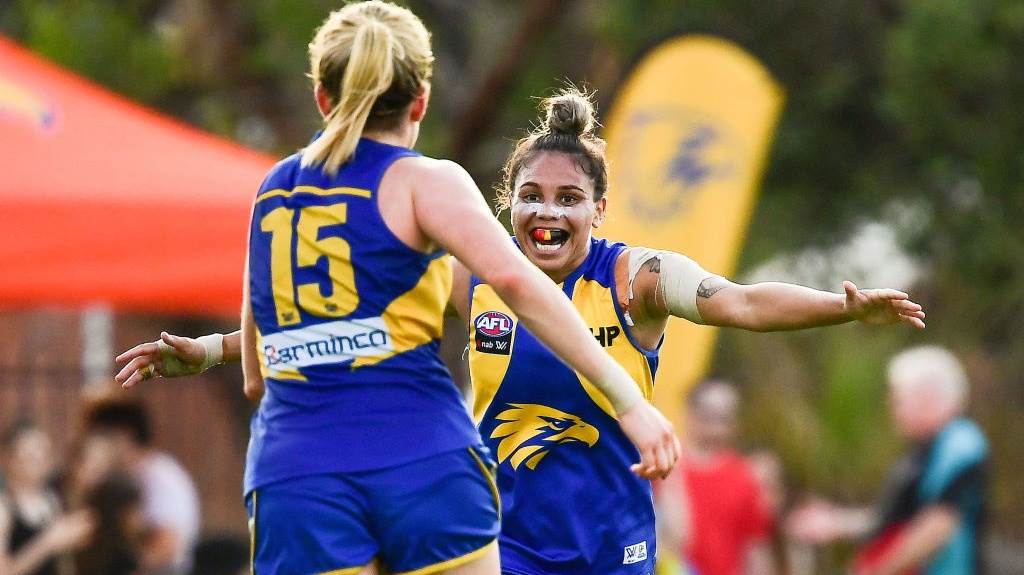To repeat the words of George Santayana in The Life of Reason (later paraphrased by Winston Churchill): “Those who cannot remember the past are doomed to repeat it.”
While the Eagles are limping to the end of an era and possibly a wooden spoon, the word that echoes around the inner sanctuary in Lathlain is certainly ‘rebuild’.
The club has clarified that they want to rebuild quickly and make this team a title contender within the next three years – although this season’s evidence suggests it will be a lengthy process.
They’d best look to the ghosts of the rebuilt past, both at their last rebuild 15 years ago and at their urban rival’s latest attempt, for inspiration on developing a squadron capable of flying for a flag again. Fight.
Eagles fans have had a charmed existence for most of the past two decades, with their only real down period being the three years in the wake of 2007 – the current clubhouse leader for their annus horribilis.
It culminated in 2010, a year that saw just four wins and the club’s first wooden spoon but also presented them with an invaluable opportunity to give blood to the next generation.
Of the West Coast’s 20 most used players in 2010, 15 were 25 or younger, and if you remove Matt Priddis, Mark Le Cras, Beau Waters, and Matt Rosa, that number drops to 11 players aged 23 or younger.
Camera IconBrad Sheppard with coach John Worsfold after West Coast drafted him in 2009. Sean Garnsworthy/SMG Credit: Sean Garnsworthy/The Slattery Media Group

Between 2007 and 2009, the Eagles fielded Chris Masten, Brad Ebert, Scott Selwood, Patrick McGinnity, Nic Naitanui, Luke Shuey, and Brad Sheppard, all given plenty of leeway to earn playing time during those three years in the doldrums.
There was also a procession of youngsters given plenty of opportunities to prove themselves but failed to cut the mustard at the AFL level.
In those three hellish years, West Coast played a lot of kids – they played 38 players in 2010 – finding out who had the Midas touch, who was reliable, and who had no future at the club.
By the time the 2011 season ended, they had lined up Andrew Gaff, Jack Darling, and Scott Lycett and were promptly just one game away from a Grand Final appearance.
Thirteen of the West Coast team from their loss in the 2015 Grand Final to Hawthorn had been drafted by the club since 2005, while the 2018 flag winners included 15 players drafted from 2005.
Meanwhile, on the other side of town, the Dockers haven’t made it to the final since finishing at the top of the ladder in 2015 – a drought that, after many years of agony, appears to be giving way to rain.
They made big strides in the aftermath of 2015, luring exciting talents like Jesse Hogan, Harley Bennell, and Cam McCarthy—none of whom are on their list yet—to the West.
Camera Icon MELBOURNE, AUSTRALI – NOVEMBER 27: Caleb Serong (L – Pick 8), Hayden Young (Pick 7), and Liam Henry of the Fremantle Dockers (R – Pick 9) pose for a photo during the 2019 NAB AFL Draft at Marvel Stadium on November 27, 2019, in Melbourne, Australia. (Photo by Dylan Burns/AFL Photos via Getty Images) Credit: Dylan Burns/AFL Photos/via Getty Images
However, while Dockers sent many design choices for the trio above, they also realized that design is the ultimate game of luck – no one knows with absolute certainty which kids are going to make it – and made up for what they had lost, while steadily piling up the draft choices that eventually became good players.
In 2016 they drafted Griffin Logue, Sean Darcy, Brennan Cox, and Luke Ryan; In 2017, they picked up Andrew Brayshaw, Adam Cerra (since traded in for a handy catch), Lloyd Meek, and Sam Switkowski; in 2018, they brought Lachie Schultz; in 2019, was the year of Hayden Young, Caleb Serong, Liam Henry and Michael Frederick; and in 2020 Fremantle selected Heath Chapman, Nathan O’Driscoll, Brandon Walker and Josh Treacy.
Impressively, while six of that group were top 10 picks (Logue, Brayshaw, Cerra, Young, Serong, and Henry), they have achieved significant success in the later rounds – Chapman is the only other member of that group to make the top 20 has been prepared.
Patience was the ultimate virtue for Fremantle, and they finally reaped the rewards after building through the design.
West Coast should take a leaf out of their book and use this season — already a write-off — to figure out which kids can play and the rest of the team build around them for years to come.
Despite all the talk of swinging first-round picks and multimillion-dollar contracts to lure home WA talents Luke Jackson and Tim English, the Eagles should take Fremantle’s lessons and be wary of trading for star players and instead try to build their depth through the design.
West Coast fans, embrace Ron Weasley’s words – you will suffer but be happy.










